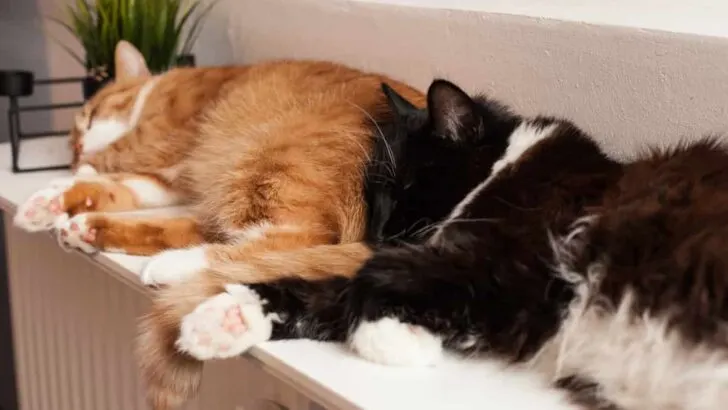Have you ever wondered why one of your cats is significantly larger than the other? While it’s not uncommon for cats of the same breed to vary in size, there are several reasons why one cat may be bigger than the other.
One reason for the size difference could be genetics. Just like with humans, genetics play a significant role in determining a cat’s size and body type. If one of your cats comes from a line of larger cats, it’s more likely to be larger than its sibling.
Another reason for the size difference could be diet and exercise. If one of your cats is eating more or has access to more food than the other, it’s more likely to be larger. Similarly, if one cat is more active than the other, it may burn more calories and be leaner.
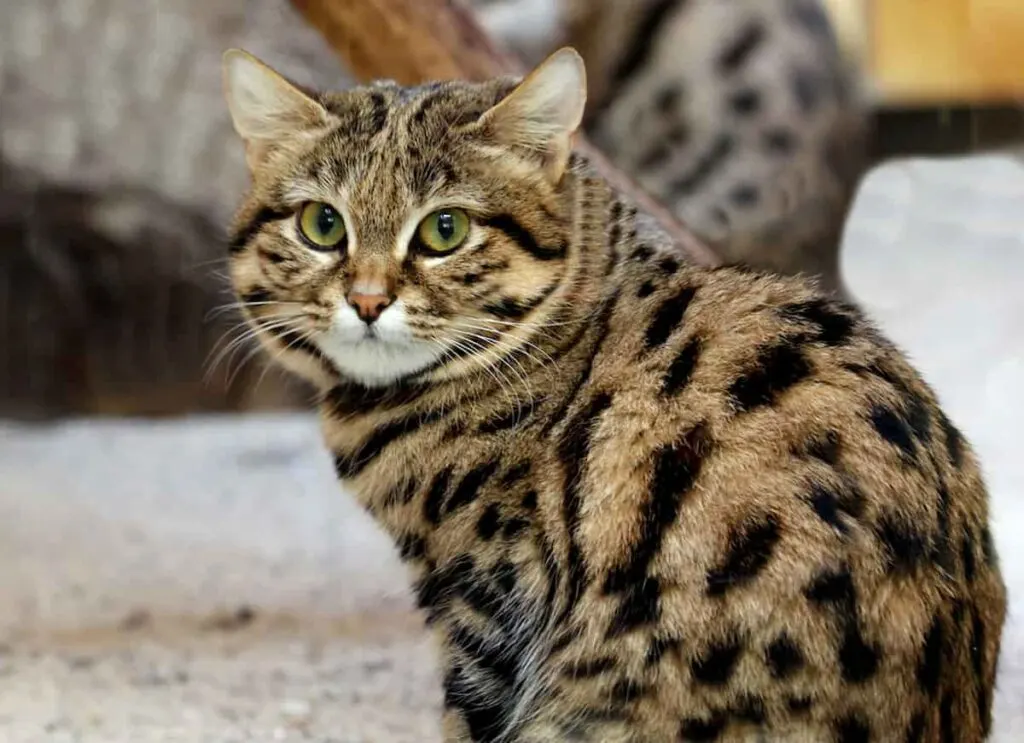
Possible Reasons for Size Difference
There are several reasons why one cat may be bigger than the other. Here are a few possible explanations:
Genetics
Genetics stands out as a crucial factor in explaining why cats may differ in size. Cats essentially receive certain traits from their parents, contributing to their overall physical characteristics, including weight and size—similarly to how humans acquire specific traits!
A Maine Coon is the perfect example, one of the largest cat breeds. It simply passes down from generation to generation.
Suppose one of your cats is bigger than the other; it’s likely that their offspring will also be more notable in size. Furthermore, if one of your cats has an inherited inclination toward obesity, they may gain weight faster and become larger than their sibling.
It is worth noting that genetics is not the only element defining a cat’s size. An animal’s diet, level of physical activity, and overall well-being can all contribute to its body structure.
Heredity may explain why one of your cats is larger than the other, but it’s essential to support both felines with a suitable diet and daily exercise. Doing so promotes healthy weight maintenance and general health for both animals.
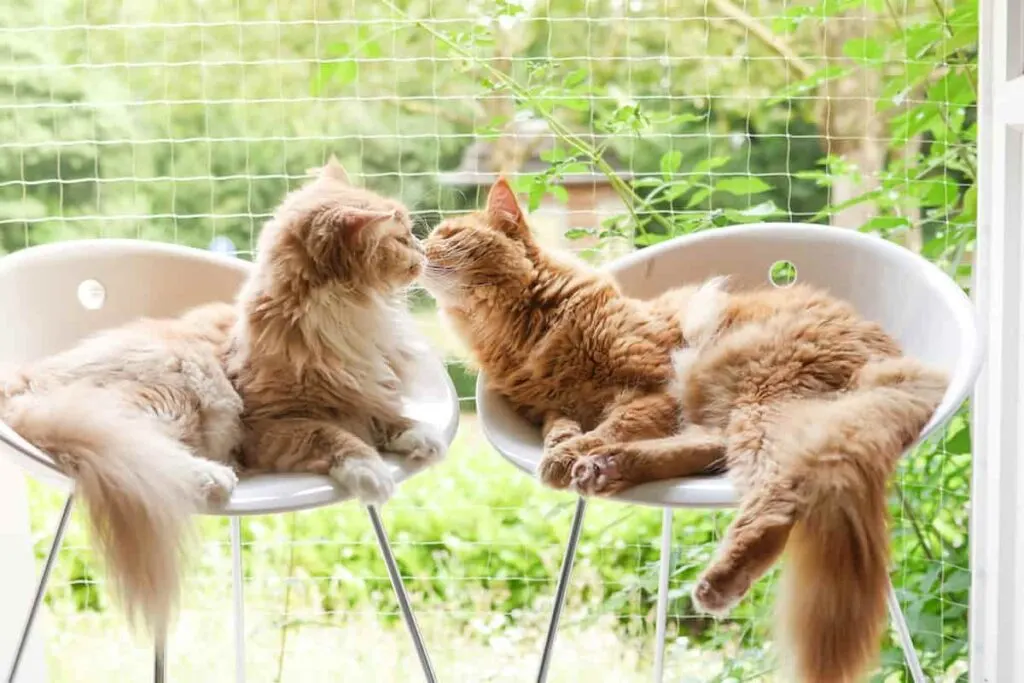
Diet and Exercise
If you’ve noticed a disparity between the size of your two cats, it could be attributed to dietary and physical activity habits. Felines are much like humans; they must consume adequate food and partake in frequent exercise if they wish to remain sturdy and healthy.
If one of your cats consumes more calories than the other, it might easily put on some weight. This could be due to overfeeding or favoring certain kinds of food (trust me this is quite easy to do if you’re on a busy schedule).
It’s essential that both felines get the ideal quantity of sustenance according to their age, size, and activity level. So, take the time to read those food labels and modify them based on your cat’s habits. If you’re unsure, a vet can help you choose the right kinds of foods and make suggestions on how much to feed your cat.
Moreover, exercise is critical to keeping your cats at a healthy weight. If one cat has more energy and participates in physical activities more frequently than the other, it can burn off extra calories and maintain an ideal body mass index.
Something as simple as a cat laser toy or tossing around a toy mouse for 10 minutes daily can make a world of difference in cats.
Be careful not to overdo it, especially if one of your cats is severely overweight. You don’t want to wear them out too quickly, and implementing these healthy changes in activity levels should be a gradual process.
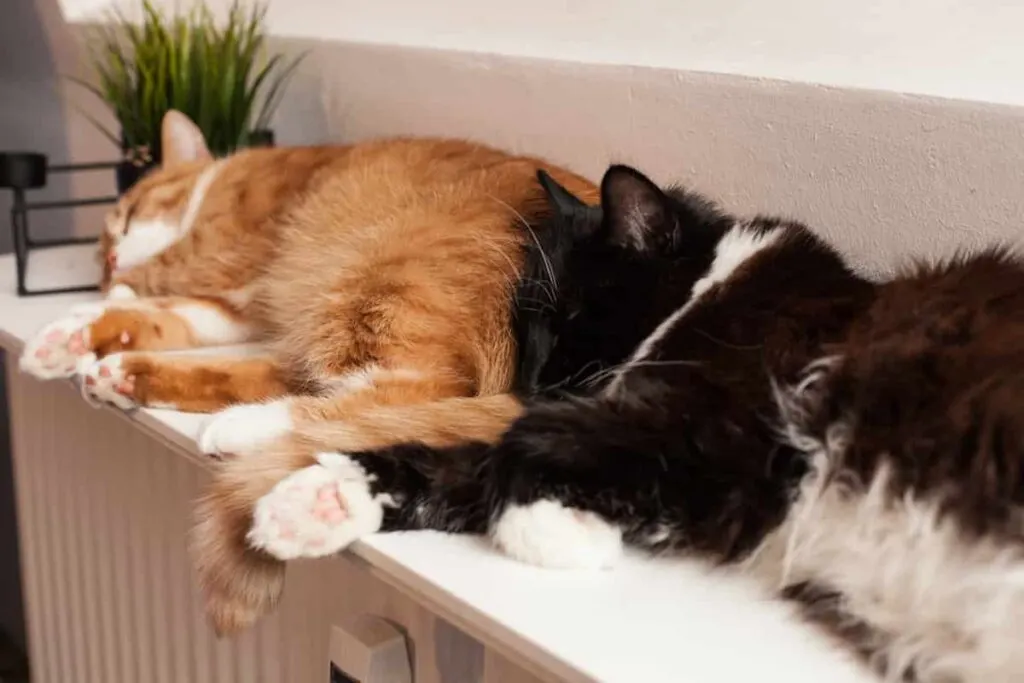
Health Issues
While a size difference between cats does not always indicate a health issue, it is important to rule out any underlying medical conditions that may be causing the size difference. Here are a few health issues that could contribute to a size difference between cats:
- Thyroid Problems: If you notice one of your cats is heavier than the other, it could be a symptom that they are suffering from thyroid problems – hyperthyroidism can lead to dramatic weight loss, while hypothyroidism causes excessive weight gain. Don’t ignore any drastic differences in size between two felines; their health may depend on it!
- Digestive Issues: Has your feline friend recently lost weight? Digestive issues, including inflammatory bowel disease, food allergies, and parasites, may be the culprit. If you notice a size discrepancy between two of your cats – one noticeably smaller than the other – this could indicate that something is amiss with their digestive health.
- Diabetes: If you observe one of your cats appearing larger than the other, this may be a sign that it is suffering from diabetes. Diabetes can result in increased weight gain for felines and should not be ignored if left untreated; it could lead to serious health risks.
If you suspect that your cat has a health issue, it is important to take them to the vet for an examination. Your vet can run tests to determine if there is an underlying medical condition causing the size difference between your cats. Early detection and treatment can help prevent further health complications.
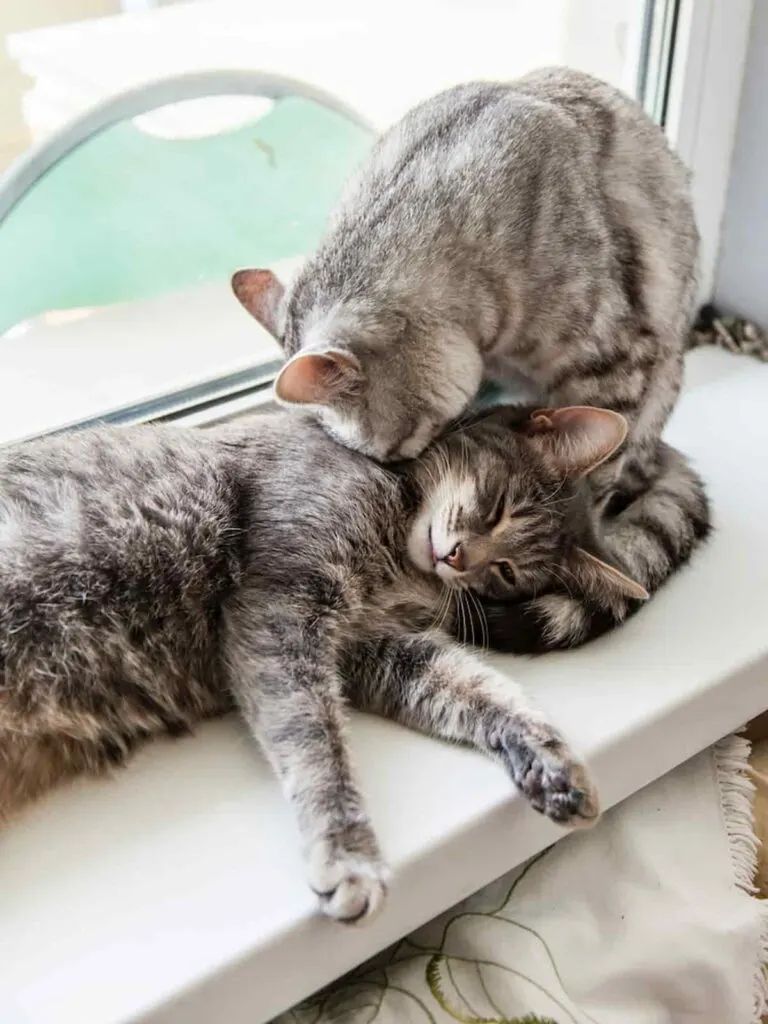
The Takeaway
While it’s common for cats in the same household to have different sizes, several factors contribute to this difference. Genetics plays a significant role in determining a cat’s size. Some breeds are naturally larger than others, and if one of the cats is a mixed breed, it may have inherited genes that cause it to be larger than the other.
Another factor that can contribute to a size difference is gender. Male cats are generally larger than females, so if one of the cats is a male, it may be bigger than the female. Age is also a factor, as younger cats tend to be smaller than older cats.
It’s important to note that weight alone is not always an accurate indicator of a cat’s health. While it’s important to maintain a healthy weight, other factors, such as muscle mass and body composition, should also be considered.
If there is a significant size difference between your cats, it’s always a good idea to consult with a veterinarian to ensure that both cats are healthy and receiving appropriate nutrition.

My name is James, and welcome to FAQCats!
Along with our team of cat owners, expert pet enthusiasts, and pet professionals, we aim to write engaging helpful, engaging content about cats. At FAQCats we strive to provide content that’s accurate and fun to read. Our team writes about everything related to cats; even the most complex of topics. Through extensive research and caring for our own fur-pals, we’re able to provide something cat owners worldwide will love. Have a look around, and leave us feedback anytime!

